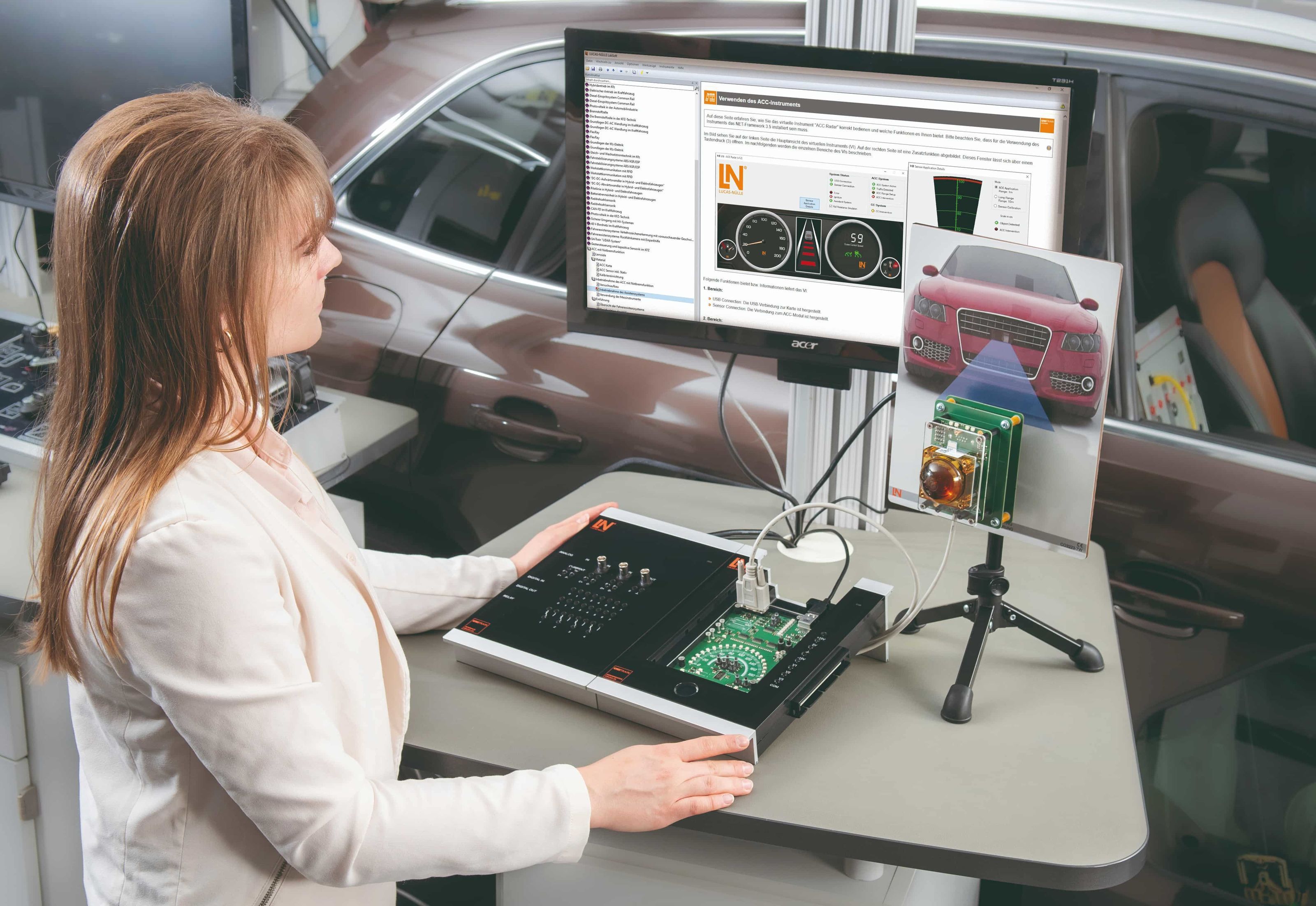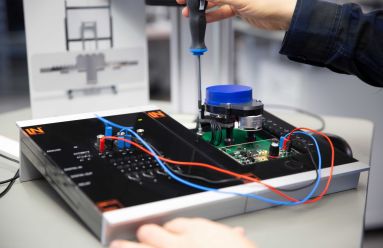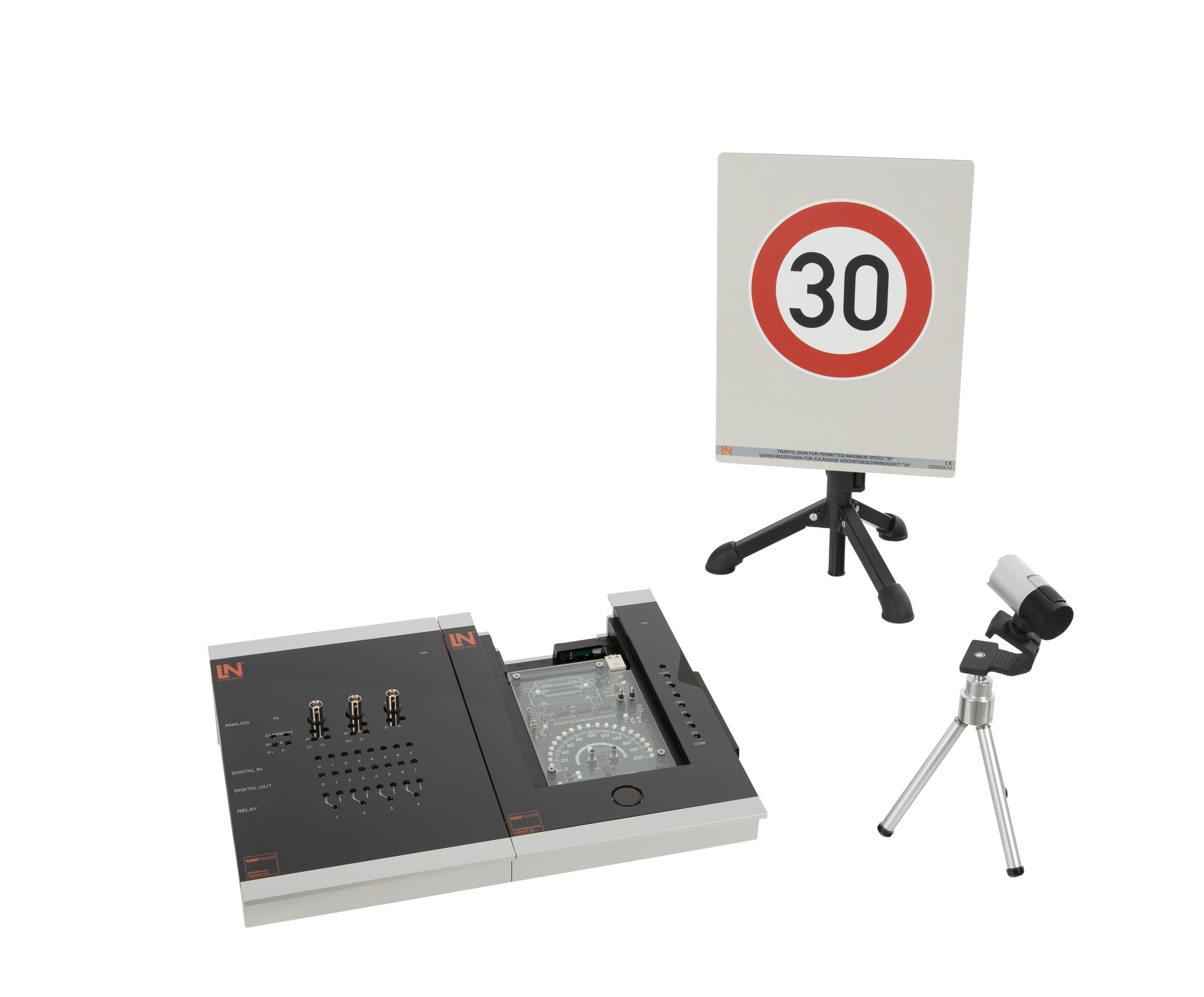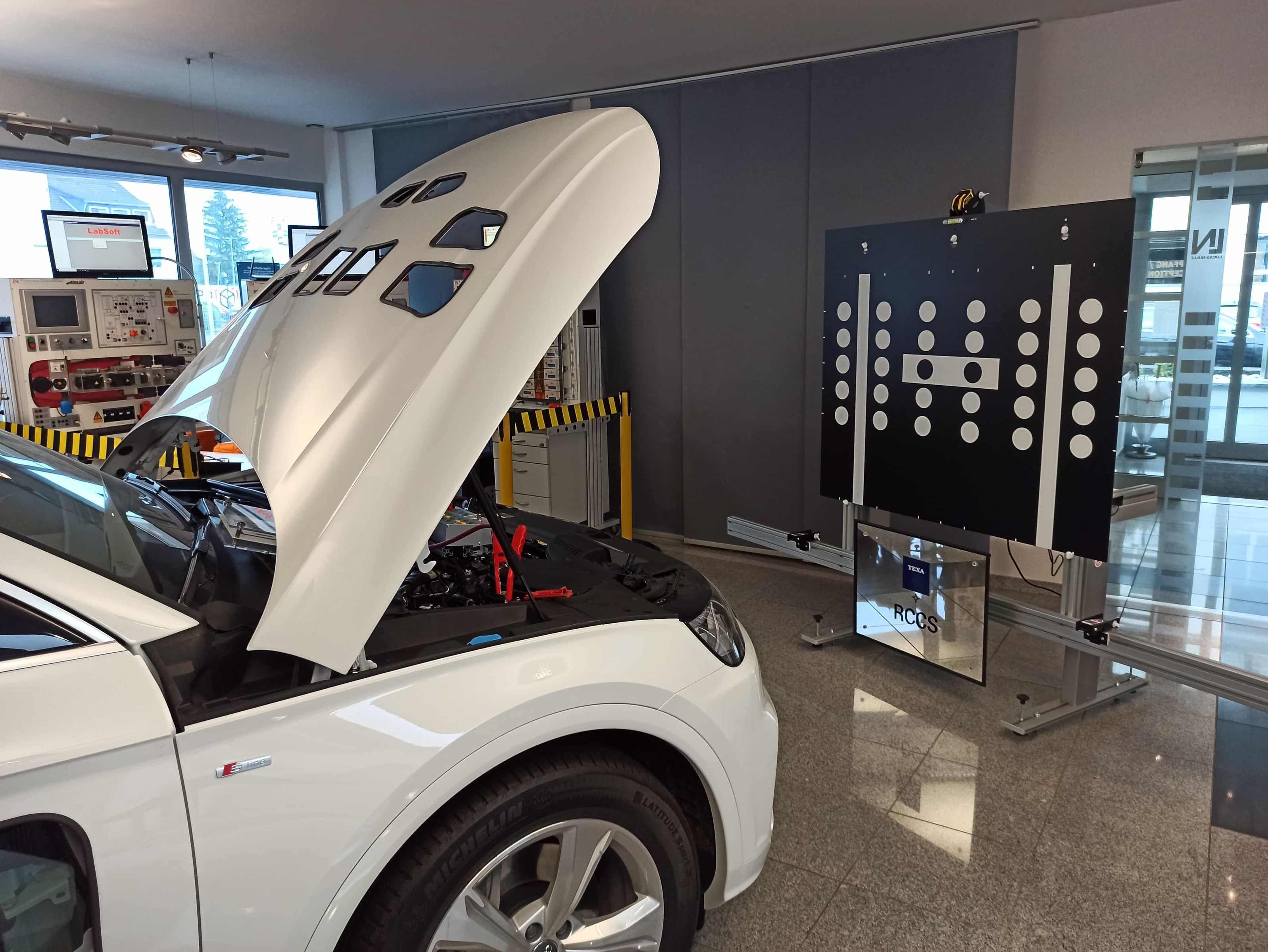Advanced Driver Assistance Training
An integrated concept from the classroom to the garageIt is no longer a secret that the vehicle of the future is network-connected and capable of driving autonomously. The effects of this trend on training and study are particularly evident in the area of advanced driver assistance systems. A vehicle that interacts with its environment can no longer be looked at in isolation in the workshop or garage by trainers and lecturers.
But how do you reproduce a fully interconnected road transport system in a training workshop or even a classroom? Digitalized training systems are essential to ensure that digitally connected vehicles can continue to be serviced and repaired in future.
In recent years, Lucas-Nülle has put a portfolio of different UniTrain training systems for advanced driver assistance as well as bus systems on the education market, which allow you to integrate the different topics into your classrooms and seminar rooms in a simple and modular way. There is even an LN solution for calibration on a real vehicle.

Below we give you an overview of the basic functions of different systems and explain how driver assistance systems can be calibrated in the classroom.
ACC – Adaptive Cruise Control (UniTrain)
ACC systems greatly assist drivers and provide a significant safety advantage. While the system gets the vehicle to the desired speed, all the while regulating the selected distance, the emergency brake assistant warns when there is a risk of collision and, if necessary, brings the car to a complete halt. At the heart of the system is a radar sensor. The UniTrain course explains the mode of operation and control strategy of Adaptive Cruise Control (ACC) including the emergency brake assistant. In addition to showing how the system is set up and connected, the course also provides learners with detailed knowledge of the individual components that make up this driver assistance system. Calibrating the ACC system is an important skill for automotive mechatronics technicians. With Lucas-Nülle you can teach them this skill in a practically relevant way using an appropriate calibration panel in a handy A4 format. The trainees and students can optimally align the module at their own workstation using the adjustment screws on the ACC module.

LIDAR (UniTrain)
LIDAR (Light Detection and Ranging) systems improve a vehicle's ability to optically capture its surroundings and thus better identify objects and estimate distances. The new technology therefore improves the performance of different driver assistance systems and serves as an important element in the transition to fully autonomous vehicles. Lucas-Nülle's didactic DAS on this subject is based on a real LIDAR module which has been adapted to give a largely open design that affords trainees and students unique insights into the design and workings of the system. In combination with the e-learning course, teachers and trainers convey how the LIDAR functions. The learners work on various fault scenarios independently in the e-learning module and perform calibration right there in the classroom using a calibration panel.
Parking Assistance System With Rear-View Camera (UniTrain)
Parking spaces can be hard to come by, especially in cities. At the same time, big cars are more popular than ever. This inevitably leads to small parking spaces. Parking assistance systems are therefore very popular and come as standard in the majority of new vehicles. Even if new mobility concepts were to solve the parking problem, network-connected cameras will continue to be an important element of autonomous vehicles. Lucas-Nülle's UniTrain system brings a complete PDC with camera into the classroom. It enables teachers and trainers to provide practical insights into the operation and diagnostics of a rear-view camera with parking assistance. Learners use the system to familiarize themselves with the system as a whole as well as with the mode of operation of its individual components. In doing so, they find out about the physical limitations of the assistance system and get to know diagnostic processes for a variety of problems.
Traffic Sign Recognition With Speed Control (UniTrain)
Attentive observation facilitates anticipatory driving. Today this applies as much to the vehicle as to the driver. Modern vehicles thus control their speed by recognizing traffic signs themselves by means of cameras. The UniTrain system lets you bring a camera to the student's workstation that records the area in front of the vehicle. The system includes different traffic signs as well as software for monitoring the data on the PC. The e-learning module guides the trainees through the detailed process of putting a traffic sign recognition system complete with speed control into operation. The learners investigate the process of integrating the camera into the system as a whole, get to know the limitations of the system and conduct various practical tasks. And, of course, the system also provides them with the necessary diagnostic skills.

Gesture Control and Capacitive Touchscreens (UniTrain)
Vehicle operation, too, has a major influence on how well we cope with the ddriving task. In their search for the simplest possible intuitive operating controls, car manufacturers are increasingly relying on alternative methods of entering commands. Instead of haptically actuated switches and control knobs, modern vehicles are increasingly equipped with on-board touchscreens and voice control systems. The latest trend is gesture control. These are systems that respond without having to touch anything. Thus, for example, the tailgate can be opened with a foot movement. For modern automotive mechatronics technicians, diagnostic skills are essential for such operating concepts. UniTrain allows trainees and students to learn how capacitive sensors work and what their differences are in terms of operation. Another important aspect is getting to know the integrated gesture control system through practical experiments. In numerous diagnostic assignments, the trainees develop a diagnostic strategy independently and isolate the malfunction.
Electronic Stability Program – ESP (UniTrain)
Modern braking systems have long been an essential part of our vehicles. The use of electronic aids such as ABS, TCS and ESP has significantly improved road safety by keeping the vehicle stable within the physical limits. The individual systems build on each other and use some of the same sensor signals. The UniTrain system lets trainees and students get to know the different systems' mode of operation and control processes. The training system makes the rapid processes visible to the human eye. Trainees and students can explore all the relevant driving situations in a practical manner by varying simulation parameters such as surface conditions, steering angle or braking force. The integrated fault simulator and various knowledge tests provide them with important diagnostic skills.
Calibration on a Training Vehicle: The Link to Real Vehicles
In practice, calibrating driver assistance systems is the most important task in terms of diagnostics and repair in this area. The digitally connected LN training vehicles - equipped with front camera systems and radar where required - allow the trainees and students to apply the knowledge they acquired in the basic course. The equipment needed for this consists of a calibration system for camera and radar, the relevant diagnostics tester and other accessories.
